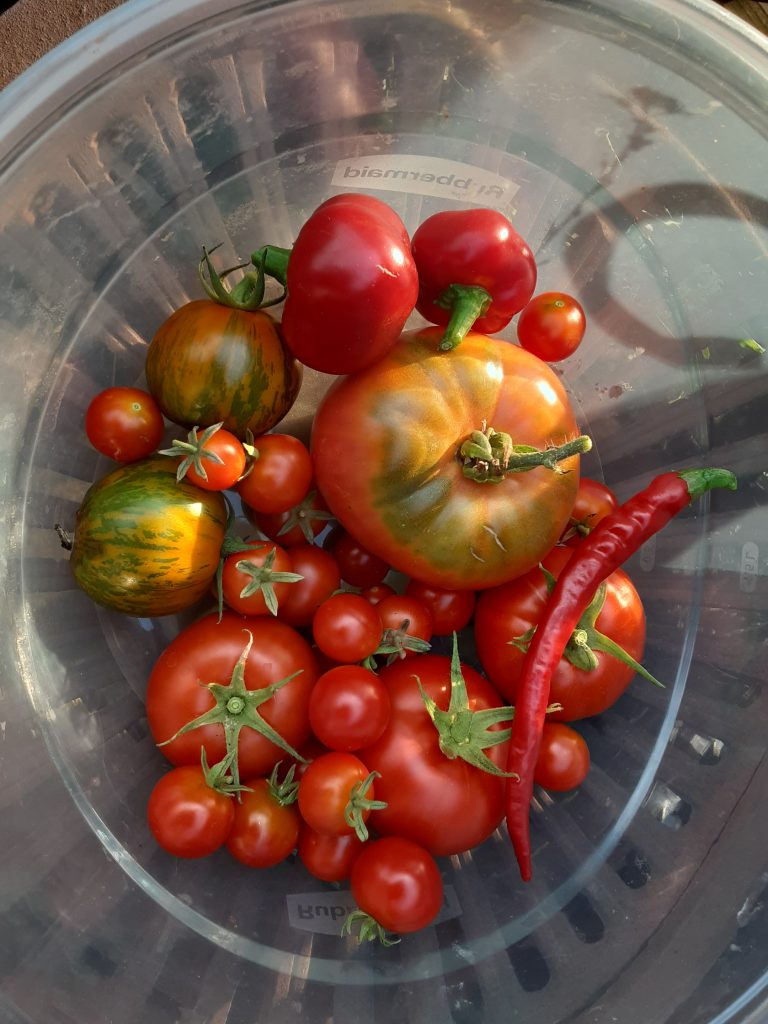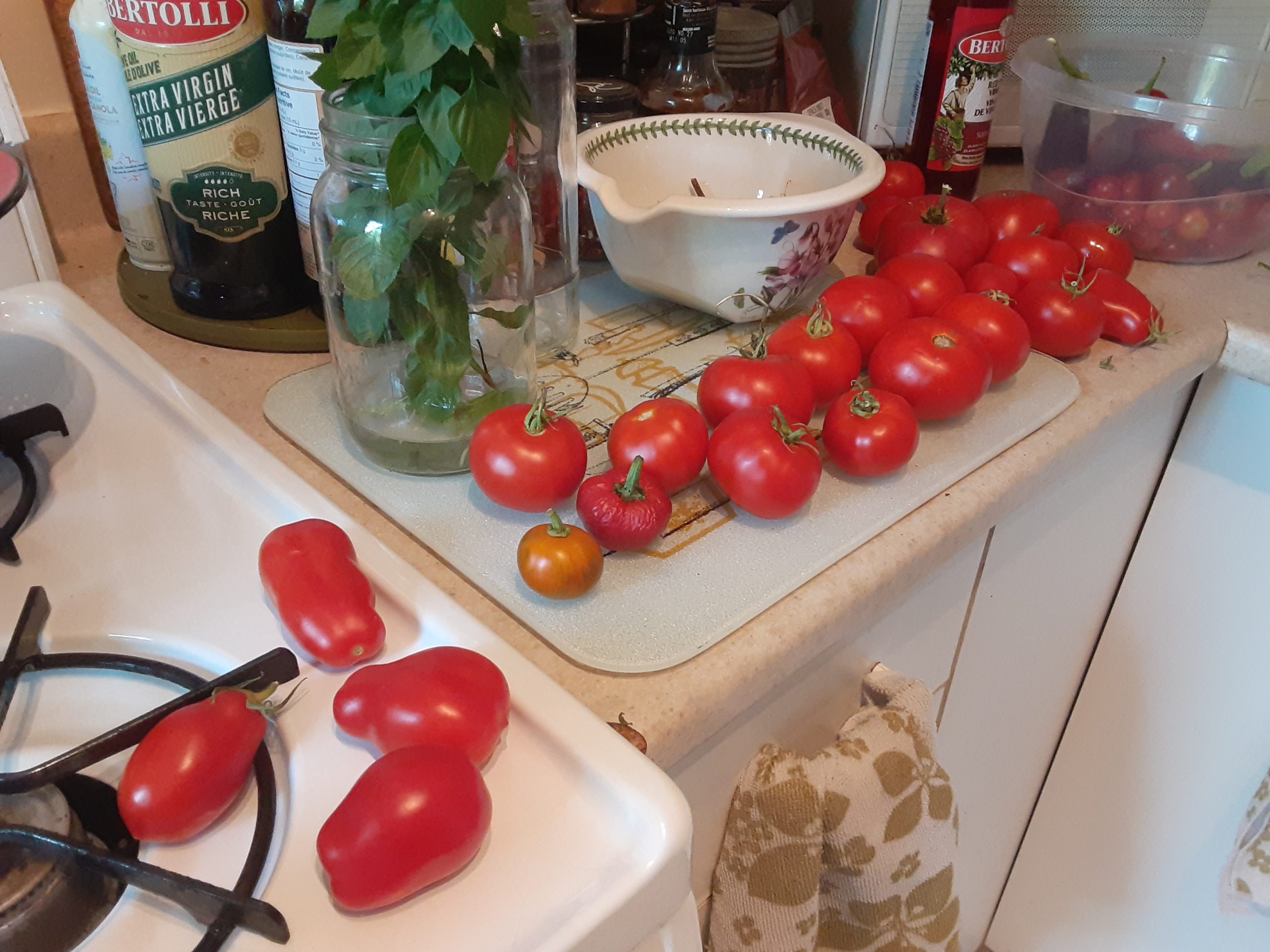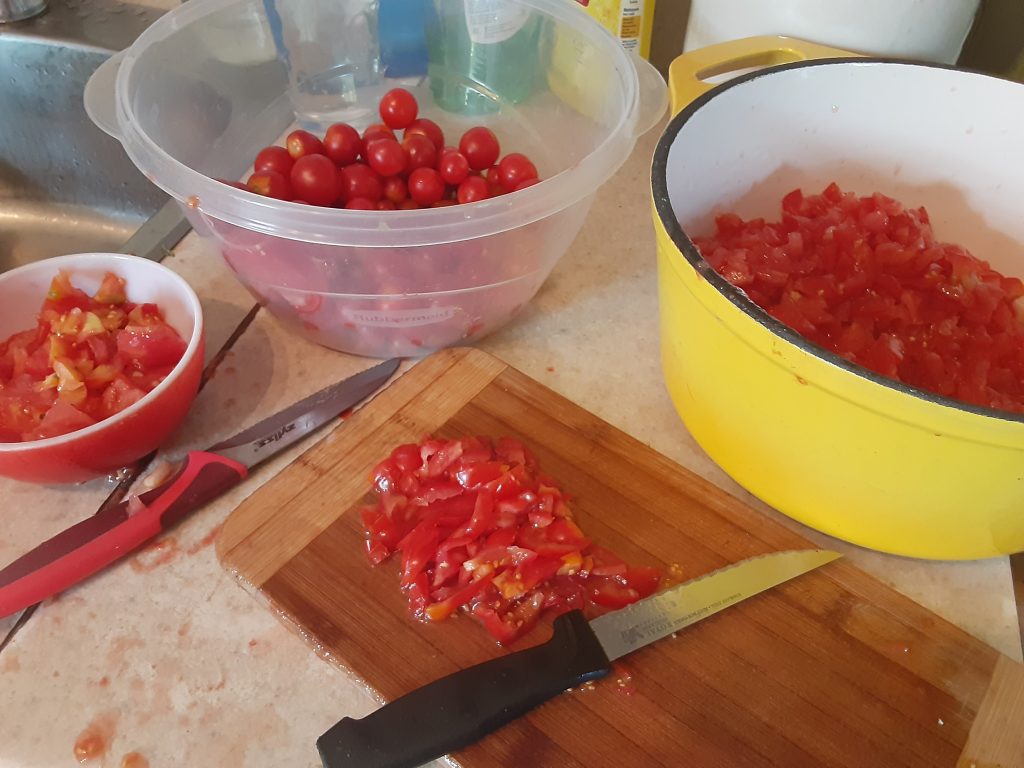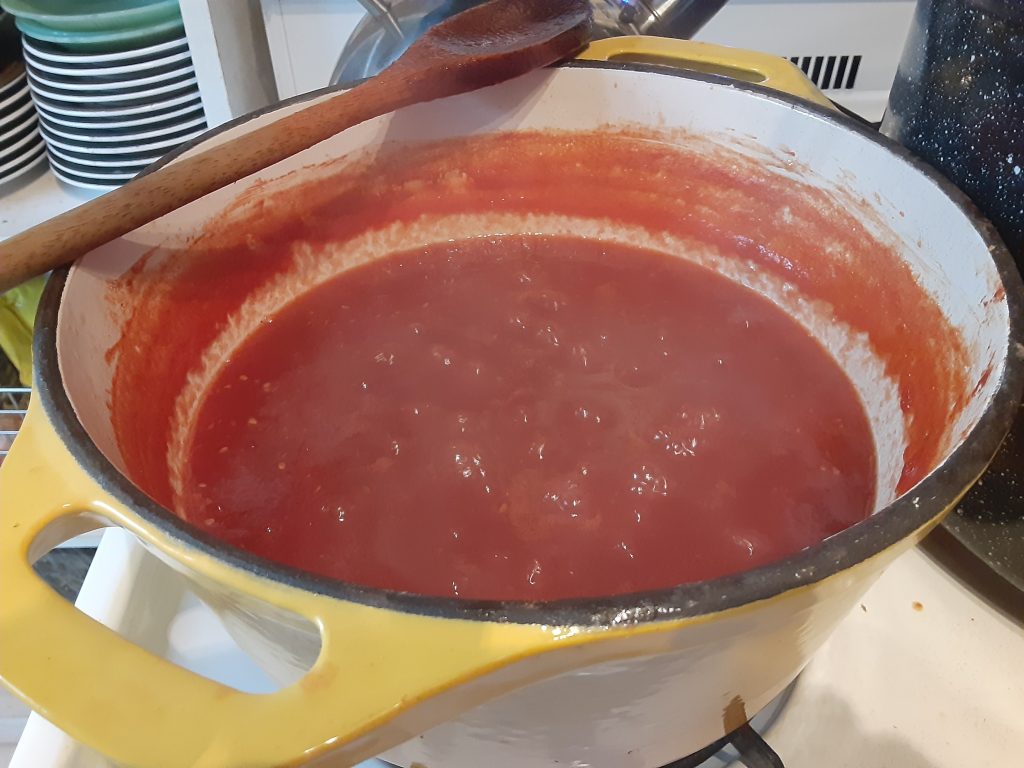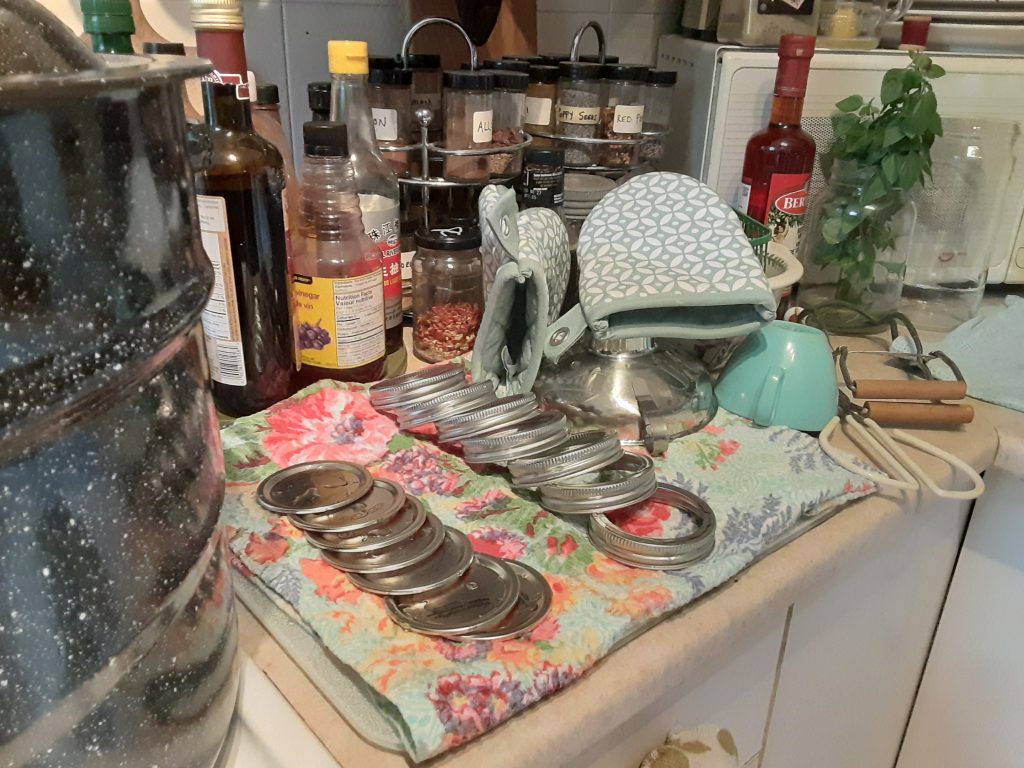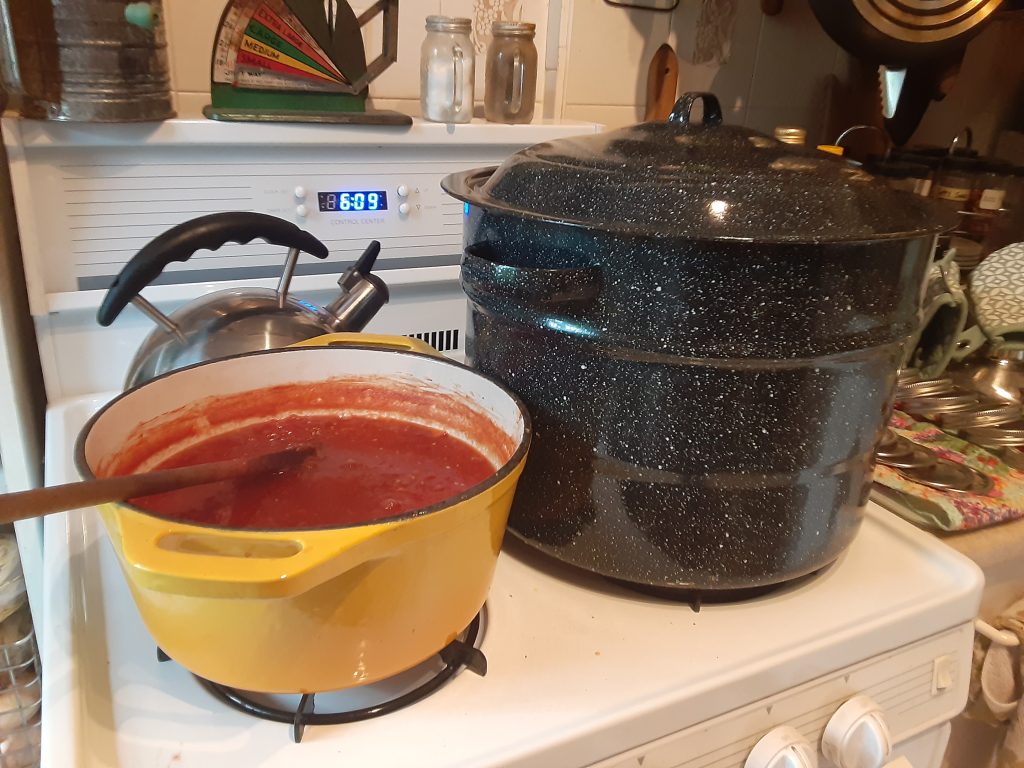Every morning I go up to my secret garden on the third floor deck and pick a colander full of fruit. Here is this morning’s pick: one Brandywine, two Green Zebra, three Slicer and a half pint of Tiny Tim tomatoes; also a couple of (likely) Cherry Bomb and one Thai Dragon pepper. Usually there is also an eggplant or two, but I’m leaving the current crop on their stems until I can use up the eggplants already in the fridge. And always, of course, there are herbs.
In the last week or so, tomatoes have begun to pile up in bowls and on kitchen countertops, accumulating more quickly than we could use them up. In response, I began casting about for a preserving recipe, one that would enable me to ‘put up’ all these beautiful ripe tomatoes safely and deliciously without enormous amounts of effort spent peeling, coring and seeding them before processing.
I now have a decent shelf of preserving manuals, but my go-to preserving book is still Sarah B. Hood’s We Sure Can: How Jams and Pickles are Reviving the Lure and Lore of Local Food (Arsenal Pulp Press, 2011). Earlier this year Sarah published another book, Jam, Jelly and Marmalade: A Global History (part of Reaktion Books’ Edible series). Offering fascinating insights into cultural, economic, labour and political history, this book is about much more than preserves, and as a bonus it also includes a selection of recipes dating back as far as the first century CE. One of those recipes is an intriguing-sounding tomato jam recipe for which Hood credits Marisa McClellan of Food in Jars fame (and McClellan in turn credits a friend, coincidentally named Amy, thus underscoring how deeply social and collaborative food culture inevitably becomes).
[The recipe I use appears in Hood’s excellent new book; it is also printed in McClellan’s The Food in Jars Kitchen: 140 Ways to Cook, Bake, Plate, and Share your Homemade Pantry (Hachette / Running Press, 2019)–another preserving book soon to be added to my own shelf. An earlier version was posted to McClellan’s blog and is available here.]
The first good thing about this tomato jam recipe is that it does not require skinning or seeding the tomatoes. This saves greatly on processing time and reduces waste. It also suits my preference for preserves that have texture, body or at least complexity to them. Even so, it took me about an hour to core and finely chop all five (and a bit) pounds of tomatoes I had sitting on the counter. Next time I think I would chop the tomatoes more coarsely, given how long they have to break down while simmering; I would also be less attentive to coring them.
The second good thing about this recipe is that you can use any kind or combination of tomatoes. A good thing for the half-dozen varieties sitting on the counter, including these exquisite and juicy Sungolds.
Into the pot they all went, accompanied by a mix of spices and sugar, where they simmered for just over two hours until, as the recipe recommends, they were reduced to “a sticky, jammy mess.” By this point the total quantity was reduced by more than half, and smelled otherworldly rich and savoury-sweet [note: the image below is a bit deceptive, as it was taken before the sauce became truly jammy: by that point it becomes a deep red and is quite thick]. I did not add any fresh or dried herbs because, as a first-timer, I wanted to work with the recipe as printed, but next time (and there will be a next time very soon!) I think I will add tarragon and/or fennel and possibly basil and oregano to the spices and ginger the recipe calls for.
Here (below) is my preserving set-up. It’s a bit compressed as I am still using the second-floor kitchen in our formerly apartmentized house (next year, after we are done a few renovations, I hope to be able to use the downstairs kitchen, which is long and expansive and has great runs of counter space and room for the big farmhouse table I salvaged from an old shed two decades ago; not sure we’ll install another gas stove downstairs, though, which is a pity).
The best things about this preserving set-up are the big yellow enameled cast iron Dutch oven, a (brand-new!) score at Value Village a year or two ago, and my mother’s canning tools, which she gave to me a few years before she died. Every time I heft her old enamel canner onto a burner, or use that turquoise melamine cup to ladle cooked preserves into their jars, I can feel some trace of her hands on them.
At the end of about five hours of work (chopping, simmering, stirring, sterilizing and processing), I was able to fill five 500 ml jars exactly full, with only a couple of teaspoons left over for tasting. After 20 minutes processing time their lids all pinged satisfactorily, and I was left to consider how I will use them over the coming months.
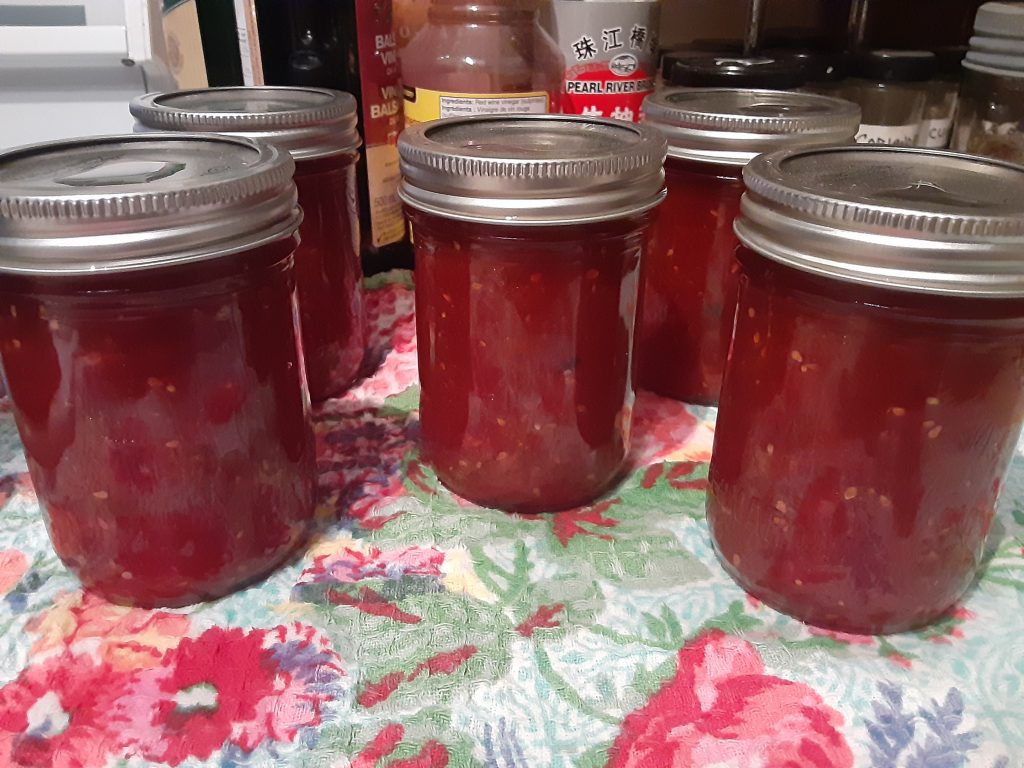
Usually I give away most of my preserves–there are only so many jars of crabapple jelly one household can consume in a year–but these jars are staying selfishly in my pantry, unless they can be brought out to be shared with company. Next week, however, I hope to make another batch of tomato jelly, and ladle it out into smaller jars suitable for storing and giving away.
I hear tomato jam is incredible with well-aged cheese.
